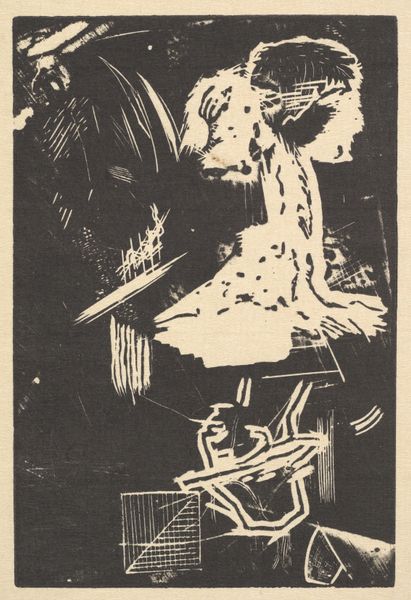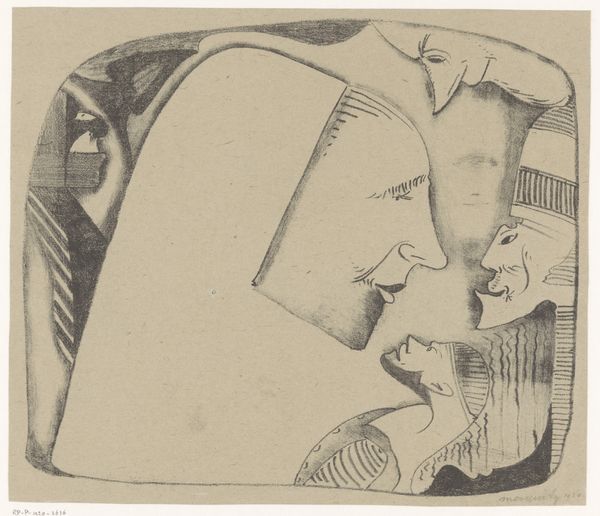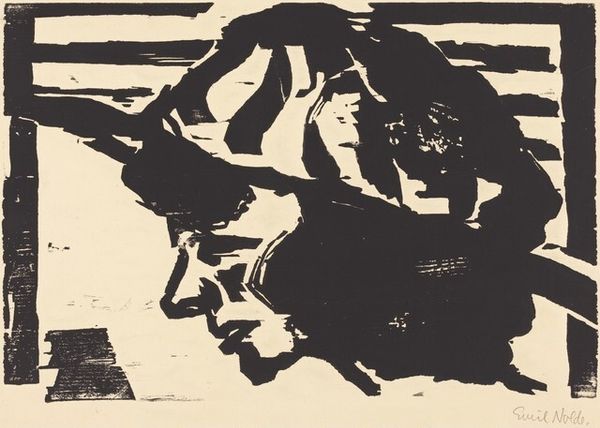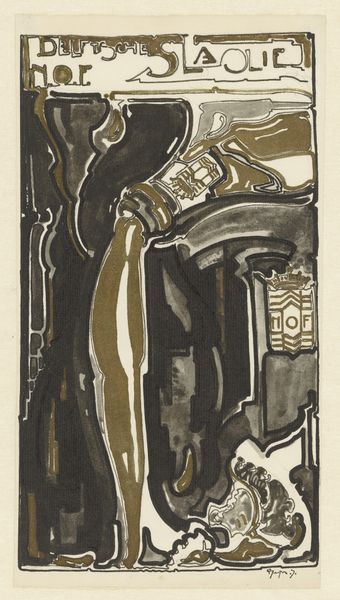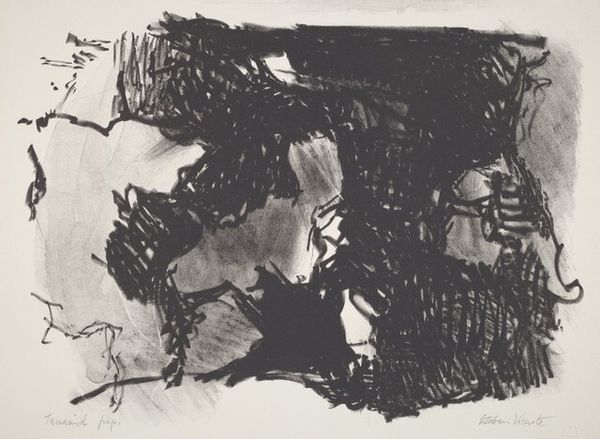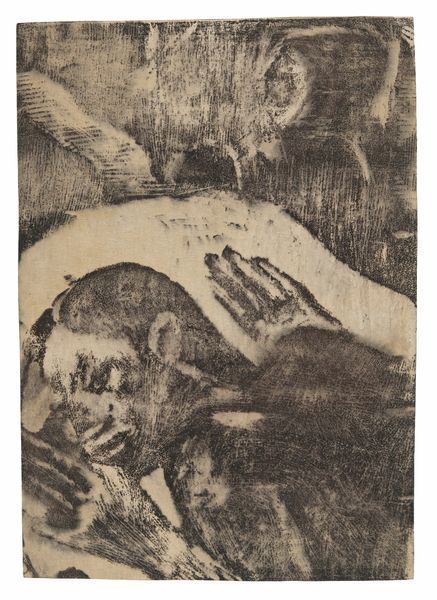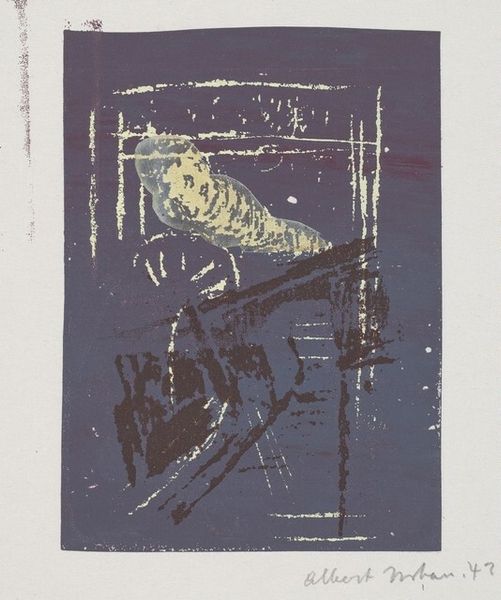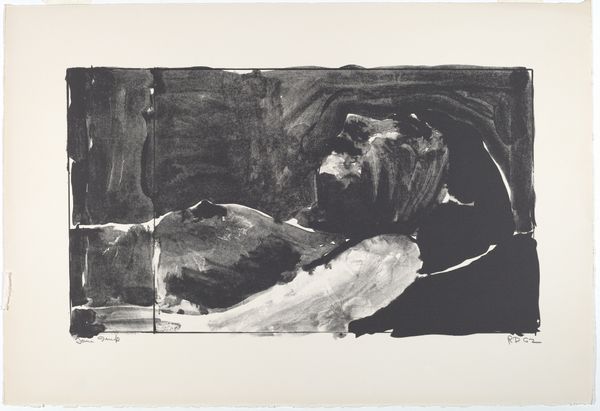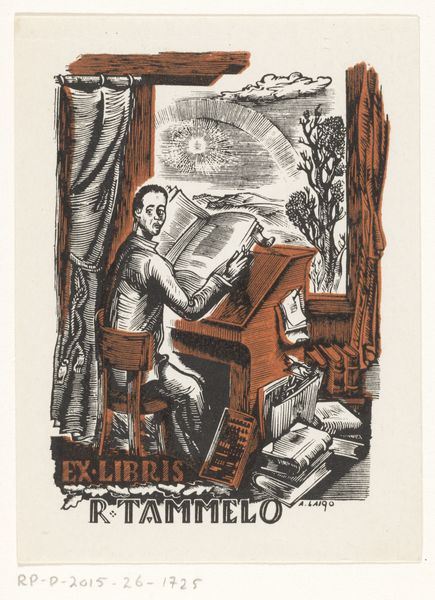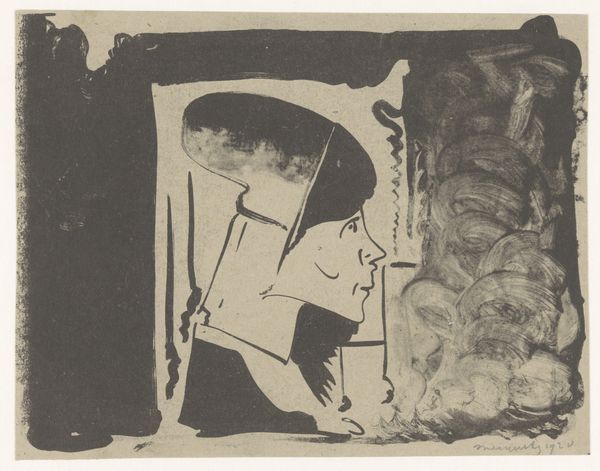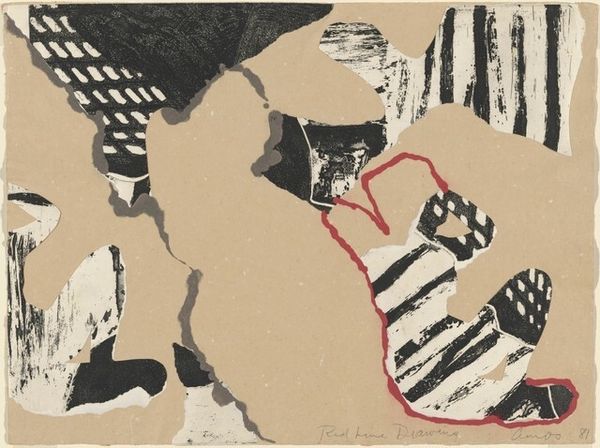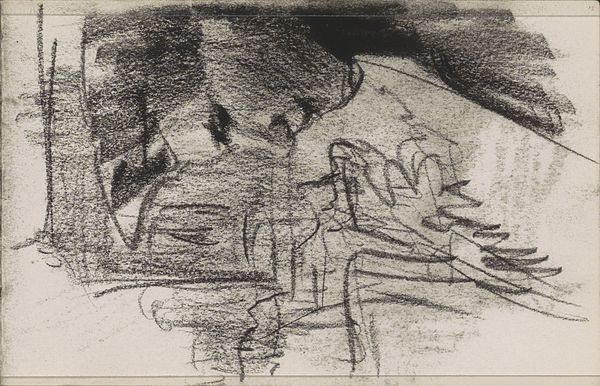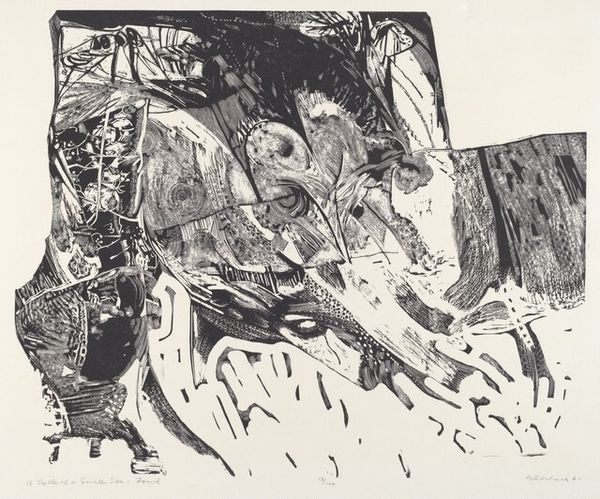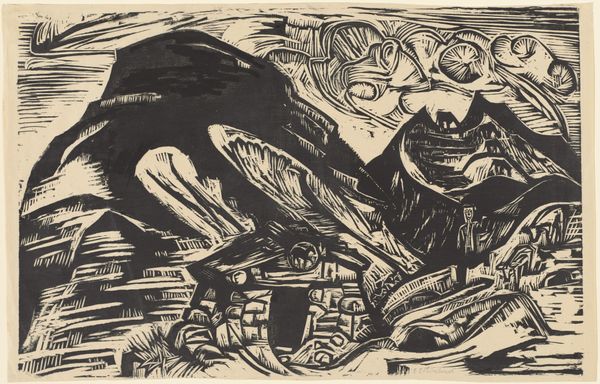
Fantasie: profielkop naar rechts in een witte rechthoek, omgeven door zwart (rechtsonder is het zwart gewassen) 1920
0:00
0:00
drawing, lithograph, print, ink
#
portrait
#
drawing
#
ink drawing
#
lithograph
# print
#
ink
#
expressionism
#
abstraction
Dimensions: height 190 mm, width 265 mm
Copyright: Rijks Museum: Open Domain
Curator: Let's discuss "Fantasie: profielkop naar rechts in een witte rechthoek, omgeven door zwart (rechtsonder is het zwart gewassen)", a lithograph by Samuel Jessurun de Mesquita, created in 1920. It's currently held in the Rijksmuseum collection. Editor: My immediate impression is one of tension. The stark contrast between the geometric form around the profile and the dark, amorphous shapes evokes a sense of confinement, or maybe even anxiety. The print seems so stark! Curator: Well, let's think about the materials first. The use of lithography—the physical process of transferring an image from stone—and the exclusive use of ink tells us about de Mesquita's access to printmaking technology and perhaps something about resource constraints after the first world war. Limited colour palettes and repurposed materials would be an appropriate economical means. The stark contrast speaks to the way cheap readily available materials could create powerful statements about individual emotion during wartime. Editor: I agree that's an important dimension of the artwork, but how do we position such intimate explorations with broader cultural narratives? Expressionism often grappled with this interplay between individual feelings of distress and public disruption, often being tied to how those same individuals saw their own place and precarity in a changing society. Curator: Precisely. And given the era—post World War One— such themes resonate deeply. Expressionism at the time often embraced distortion and abstraction, but in relation to materiality: De Mesquita's technique also embodies that raw, unfiltered expression, it's a testament to working with materials readily available after war. His application here gives an inside look at individual process as reflective of broader historical events and the constraints that impacted art. Editor: I'm intrigued by how the dark masses seem to creep in, encroaching upon the defined profile, almost as if the individual is being consumed by an oppressive outside force or simply consumed by the process of working with the materials at hand. We can almost see the labour! How these things blur together. It makes it powerful piece for sure. Curator: And ultimately the value of such works and their power to convey important messaging and emotions as related to conflict speak to not only art of the time but of our moment, speaking beyond singular medium into the value of the art within its own right. Editor: Agreed. This close examination really offers a view into the intersections of both personal struggle and broader artistic concerns of the era. Thanks.
Comments
No comments
Be the first to comment and join the conversation on the ultimate creative platform.
